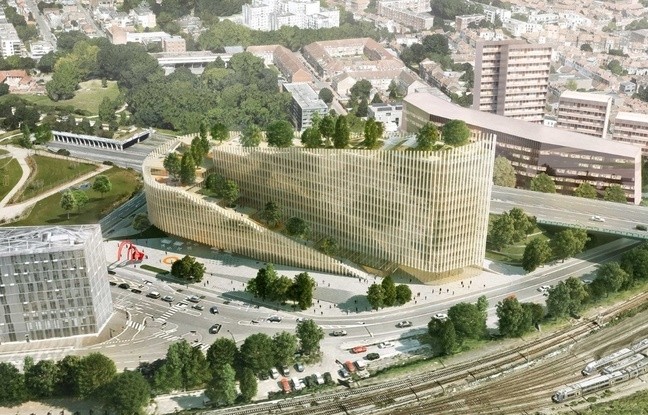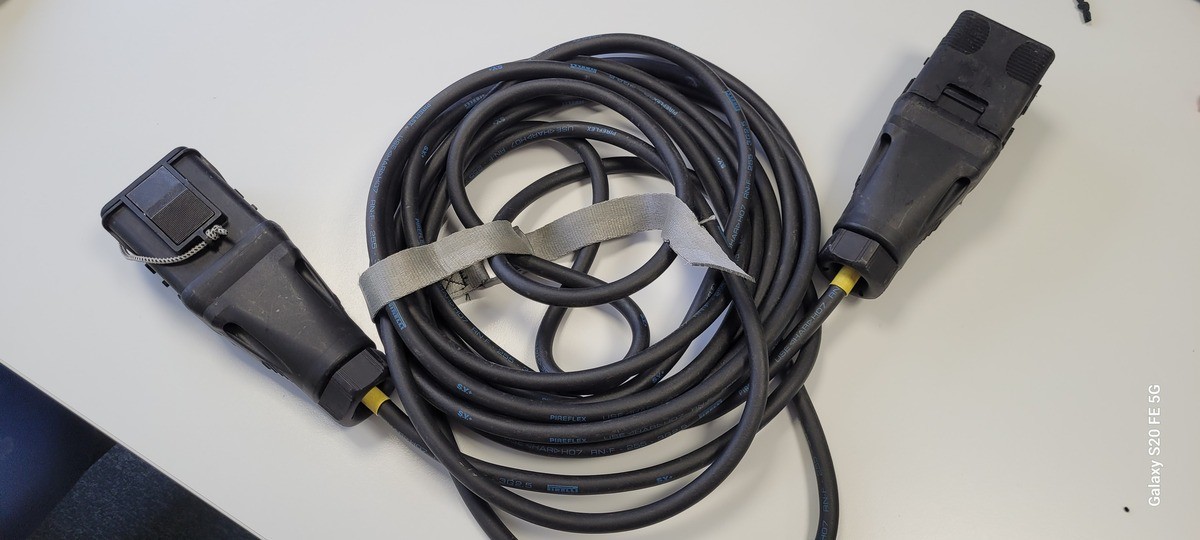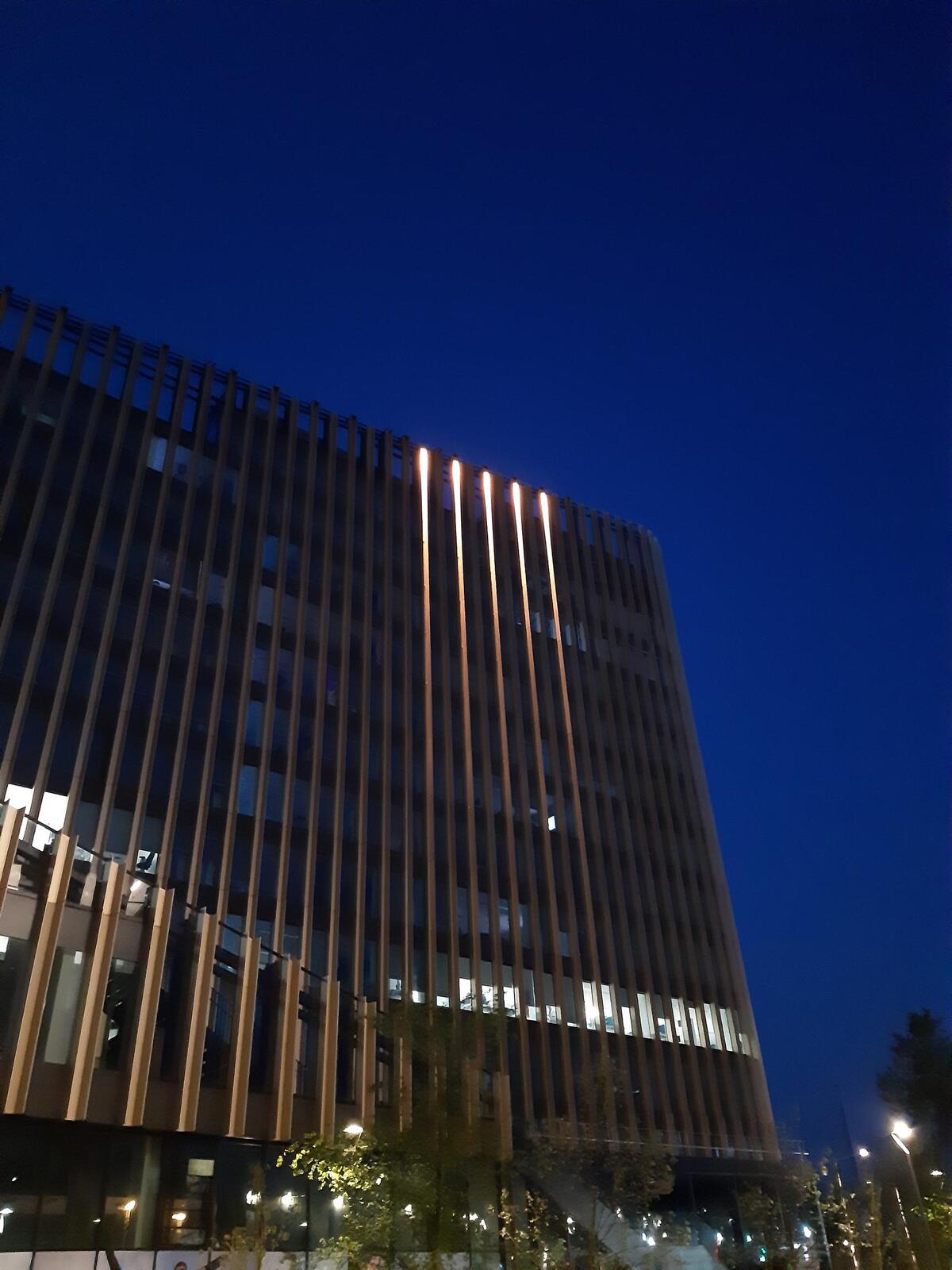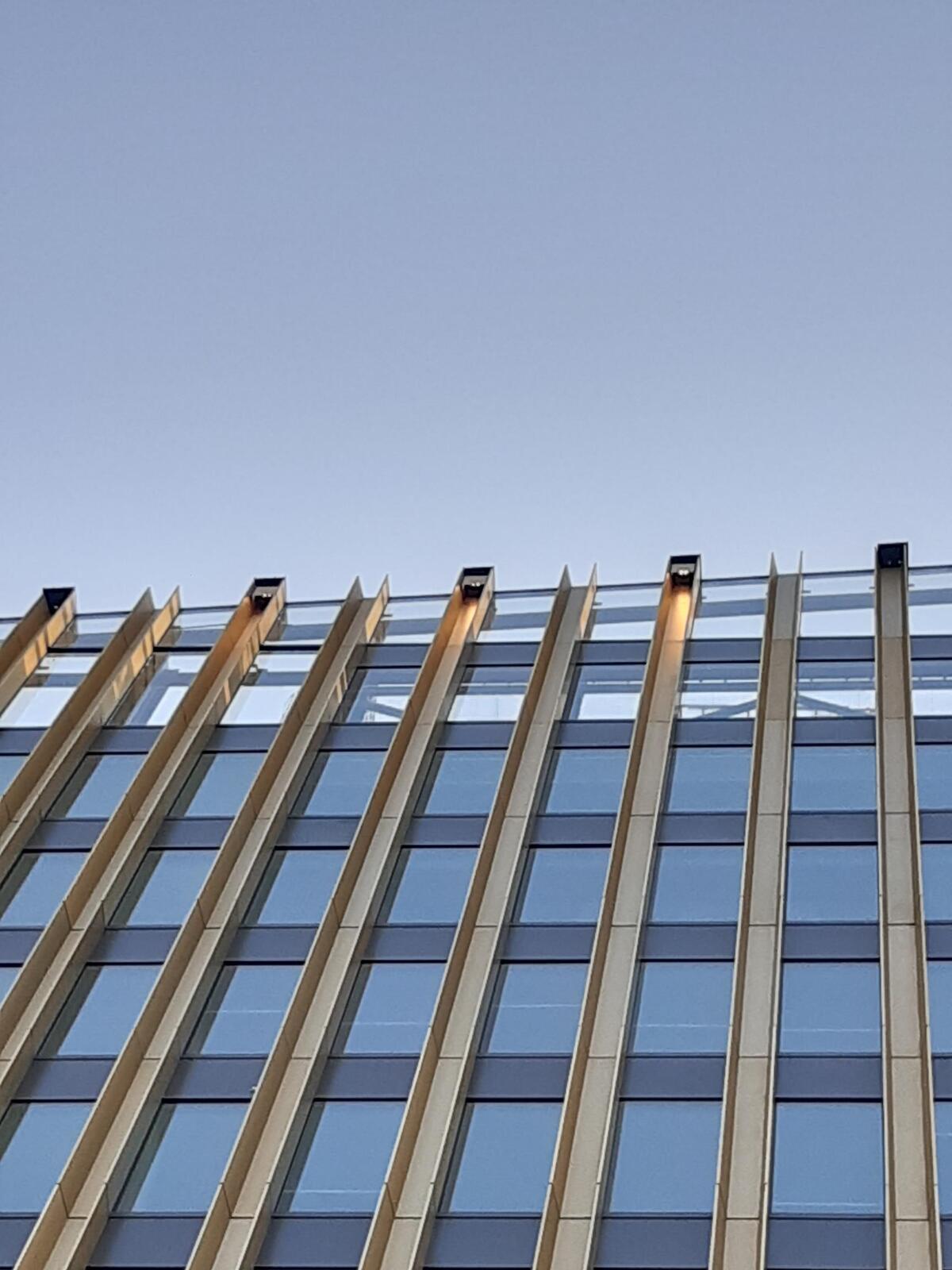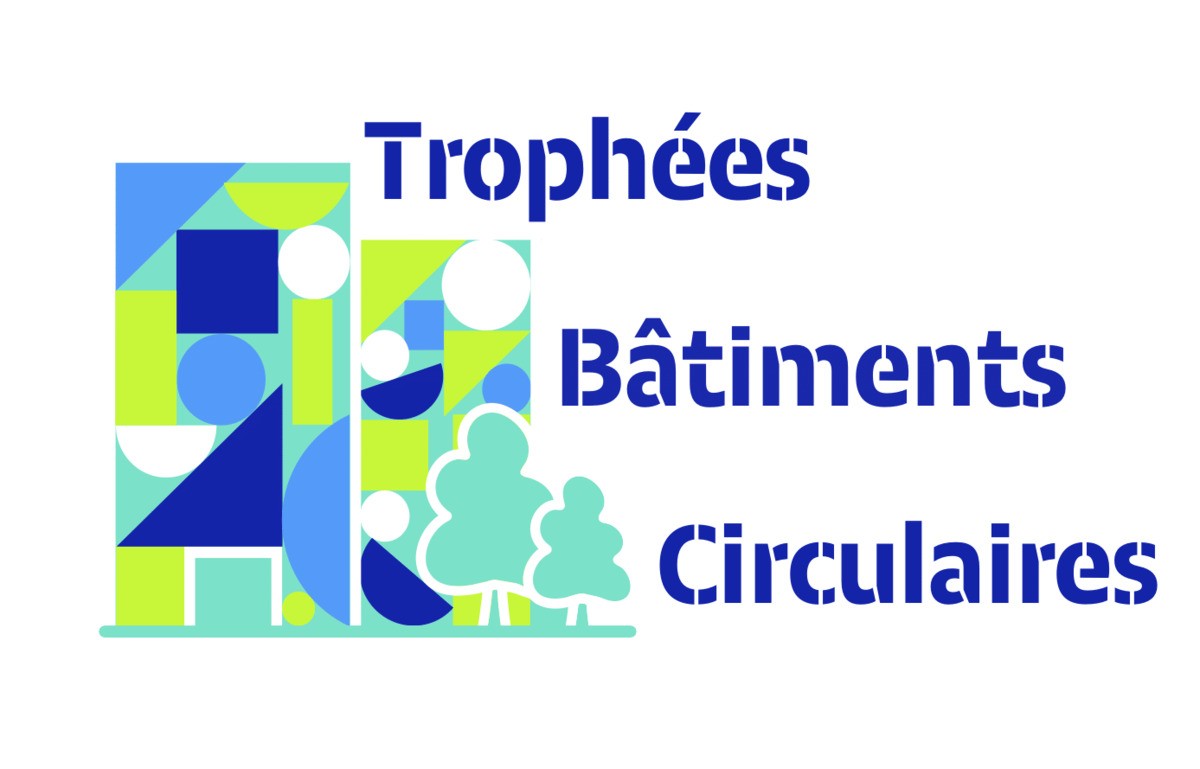Shake - Lille (59)
Last modified by the author on 09/05/2023 - 11:18
New Construction
- Building Type : Office building < 28m
- Construction Year : 2023
- Delivery year : 2023
- Address 1 - street : Avenue Willy Brandt 59777 LILLE, France
- Climate zone : [Cfb] Marine Mild Winter, warm summer, no dry season.
- Net Floor Area : 30 000 m2
- Construction/refurbishment cost : 100 000 000 €
- Number of Work station : 1 500 Work station
- Cost/m2 : 3333.33 €/m2
Certifications :
-
Primary energy need
100 kWhep/m2.an
(Calculation method : RT 2012 )
Located in the heart of Euralille, 3rd business district in France, ShAKe is much more than an architectural project, ShAKe carries a philosophy: well-being at work. ShAKe is revolutionizing the way of thinking about business real estate by relying on three major societal trends: the decompartmentalization between private and professional life; the transition to a logic of use and sharing; and finally, the development of the notion of community.
30,000 m² at your service - The architecture of ShAKe reinvents the codes to decompartmentalize offices and offer its occupants, as well as the actors of the district, a flexible, open and welcoming ecosystem. A space of services and resources for personal and collective fulfillment and development. A philosophy that fits with today's nomadic work interspersed with multiple times of life.
The building accommodates:
- 13,000m² of dedicated office space at Caisse d'Epargne regional headquarters
- 7,000 m² of office space occupied by the Tisserin group, the PWC firm...
- 3500 m² of coworking space
- 2,000 m² of space for a start-up incubator
- A hotel, restaurants, a fitness club, shops, a vegetable terrace...
The circular economy has been one of the areas of work and is part of Nacarat and the Tisserin group's desire to reduce the environmental impact of projects. Several actions have been carried out, including a particularly innovative experiment on the reuse of electric cables.
BIM approach
BIM Design (GO model + technical lots) / for execution, only synthesis of technical lots and facades / BIM in-house operation of the Caisse d'Epargne.
Photo credit
Samuel DHOTE
Contractor
Construction Manager
Stakeholders
Company
Cegelec Nord Grands Projets
Felix BUTRUILLE
https://www.cegelec-nord-grands-projets.com/Electricity package
Thermal consultancy agency
BARBANEL
https://www.barbanel.fr/Type of market
Realization
Allocation of works contracts
Build and sell construction
Energy consumption
- 100,00 kWhep/m2.an
Envelope performance
- 1,20
Systems
- Heat pump
- Fan coil
- Heat pump
- Water chiller
- Double flow heat exchanger
- Solar photovoltaic
Biodiversity approach
Urban environment
Construction and exploitation costs
- 100 000 000 €
Circular economy strategy
- Targeting a few diversified products for testing
- Choice of non visible products
- Maximization of the carbon gain
Reuse : same function or different function
- Electricity
- 100 cables of 10 linear meters. Type H07
- Origin: Demantec company (TRACE group) in charge of reprocessing batches from the army.
- The reused cables were used to power the exterior lights on the "thorns" of the building.
- Implementation identical to a new cable.
- Part of the laying of the cables for this use could not be done with reused cables because lengths of more than 10 meters were necessary.
Logistics
- No problem of storage, supply correlated to the progress of the works
Insurance
Environmental assessment
- 785 kg of CO2
- 810 m3 of water
- 1,750 kg of waste
- 6,278 kilometers traveled by a small car, i.e. 7 Paris-Nice journeys;
- 5,402 rectangular bathtubs filled with water;
- 3 years of household waste from a Frenchman.
Economic assessment
- Purchase by the company from a reuse platform
Communication
Social economy
Reasons for participating in the competition(s)
Towards an electrical cable reuse sector - Shake 1st pilot project!Electric cables have a significant impact on the environmental balance of a commercial building. Indeed, copper is a material that requires a lot of energy for its manufacture. The CO2 impact of a linear meter of sensitive cable (< 5 mm²) is evaluated according to the INIES database at 1.8 kg. For a project like Shake, hundreds of kilometers of cable were laid to complete the electrical installation.
Based on this observation, a reflection emerged to use reused cables and the Shake building hosts the first implementation! The company Cegelec Nord Grands Projets (VINCI group), in charge of carrying out the electrical installations, used a layer of 10m flexible cable (HO7 3G2.5mm²) to power the exterior lighting on the building. About 100 cables with a length of 10m were laid and generated a saving of about 1.8 tons of CO2 (evaluation according to INIES database).
This achievement is part of an ambitious and innovative project: to set up a sector for the reuse of electric cables. A sector makes it possible to simplify and systematize the actions for all the actors. The industrialization of the different stages should make it possible to supply reused cables at a competitive price compared to new cables.
The reuse of electric cable in the Shake project is therefore the first step in setting up this sector in Haut de France. In particular, this makes it possible to validate the insurability of the laying of reused cables . This insurability notably involves the validation of a qualification and inspection process for electrical cables.
A set of joint actions are undertaken:
- Identification of deconstruction site with Nacarat to design a methodology for the careful removal of electrical cables. 3 tertiary projects in the Lille metropolitan area, totaling 7,000 m² of floor space, have been identified for selective deconstruction in 2023.
- Establishment of partnerships with companies in the social and solidarity economy:
The ESAT, the white butterflies in Roubaix-Tourcoing, organized in a workshop, for the control, the tests, the reconditioning and the storage of the electric cables.
Vitaservice, a subsidiary of Vitamine T, for the selective removal of cables and cable trays.
The organization of a sector and the establishment of a partnership make it possible to envisage reused electric cables being put back on the market at a competitive price compared to new cables, while improving the remuneration of removal companies.
Ultimately, we believe that all deconstruction sites and construction sites could benefit from a channel for reusing electrical cables.
Other reuse actionsThe genesis of the operation dates back 5 years, and in fact the reuse approach came as an additional ingredient and not as an initial strategic approach. This is why reuse approaches have focused on one-off, spontaneous initiatives during the more recent development phases of lessees.
Thus, during the development work of the tenants of the office part, and in particular the premises of the TISSERIN group, we proceeded to the selective removal of new carpets installed at the reception with a view to their reuse in the buildings hosting the Olympic Games. of PARIS 2024, via our partner TEXTIFLOR.
Still on this subject of flooring, we opted for a fitted carpetfrom a reuse sector (4000 m² approx.), via our developer TETRIS. The Rex that we can share is that approximately 2 out of 3 slabs on the reuse deposits transmitted could be laid, which allows a recovery of 65-70%, but does not seem sufficient to us in view of the expected massification on these subjects (track: better sorting at source to maximize the reuse rate).
Building candidate in the category





